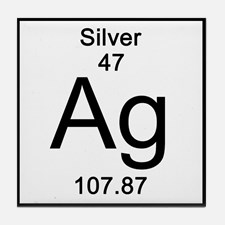This is a positively charged particle in the nucleus of the atom.
What is a proton?
True or false: heterogenous mixtures can be a mixture of solids, liquids, and/or gases.
True.
Mixtures can be any combination of all states of matter: solids, liquids, and gases.
What is Group 15 (new Periodic Table) or Group VA?
Isotopes
Organized the periodic table in such a way he could predict elements that were not yet discovered and led to our modern periodic table.
Dmitri Mendeleev
This is an uncharged particle in the nucleus of the atom.
What is the smallest unit of an element that maintains all the properties of that element?
Atoms
What makes up the majority of the periodic table?
What are metals?
How many electrons are in oxygen ion with a charge of -2?
10 electrons
Dalton stated all atoms of a given element are identical. Why is this not true?
The number of protons for the element Calcium (Ca)
Is a heterogeneous mixture chemically bonded? Elaborate.
No. Heterogeneous mixtures are combined but not chemically like compounds.
This represents the identity of an element and does not change for that element.
What are protons?
What's the purpose behind distillation?
separates liquids with differing boiling points via evaporation and condensation.
Why would a stream of particles in a cathode ray tube deflect toward a positively charged metal plate?
The stream is composed of negatively charged particles called electrons.
Where are protons located in an atom?
nucleus
What is another term we can use for homogeneous mixtures that contains a solute and solvent?
Solution
In this category, a mystery element Z is a non-lustrous solid and a poor conductor of electricity.
What are nonmetals?
Name two substances accidentally discovered by alchemists that were mentioned in class.
Any of the following are correct:
-Arsenic
-Phosphorus
-Sulfuric acid
-Zinc
-Ammonium chloride
-Nitric acid
What did Rutherford infer about the structure of the atom after conducting his gold foil experiment?
How many neutrons does the following element have?

What is 61 neutrons?
Which of these statements are true about compound?
A. Compounds can be found in the periodic table.
B. Compounds are pure substances.
C. Compounds are made up of two or more pure substances.
D. Compounds can be separated by physical means.
B and C
Compounds are pure substances and are made up of two or more elements.
*Elements can be found in the periodic table.
*Compounds can only be separated by chemical means.
The seven diatomic elements found in nature (meaning they are found bonded to themselves).
What are Br, I, N, Cl, O, H, and F?
How many protons, neutrons and electrons are in Arsenic-68?
Protons: 33, Neutrons: 35, Electrons: 33
The law of constant composition states atoms in a given compound will always combine in the same mass ratio and whole number ratio of elements. Determine the mass ratio of the compound: CH4
12g:4g or 3g:1g